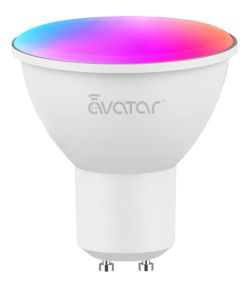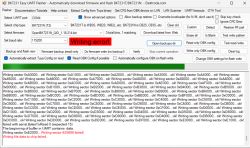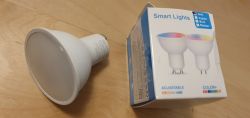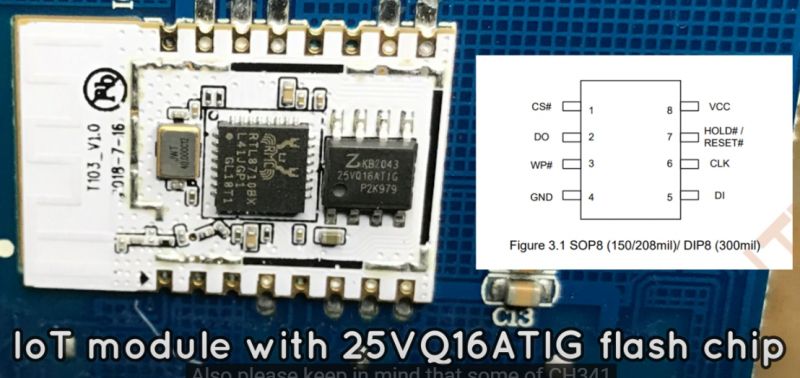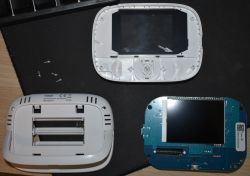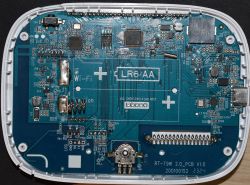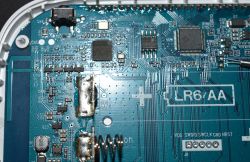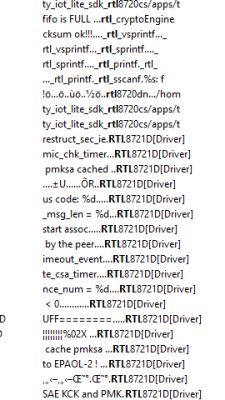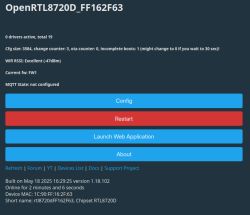There is one Tuya cloud device remaining at my home, and it is my thermostat. T9W 2.0 R9BW 2.0 (by EZAIOT, but possibly there are different "vendors" like SALCAR or others). Sold by the big Chinese market. It can't be controlled by LocalTuya (because of some weird protocol version), only cloud.
My target is to make it locally controllable by flashing OpenBeken on it. I don't yet know what the chip is inside, but it seems to be at the room thermostat part. Also seems to be a TuyaMCU device (I extracted tons of dpIDs from iot.tuya.com portal, also there is a non-WiFi model which could be missing the WiFi chip entirely).
It consists of 2 parts -
* RF receiver part which is powered by mains power. RT-RC9PLUS 1.1_PCB v1.0 200100164
* room thermostat with LCD screen, setting knob and WiFi, powers either by 2x AA 1.5v batteries or USB-C (or both)
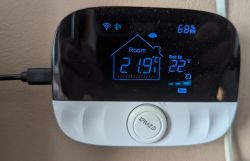
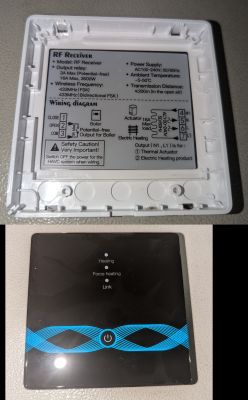
RF receivers board in the picture below. There seems to be RF receiving part, relays, status LEDs, contacts COM, OPEN, CLOSE and power input. Pairing switch and some 20pin chip which has no initials on it. Doesn't seem to be any smart device, only RF receiver.
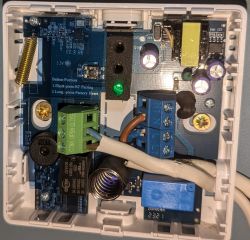
More will follow!
Added after 1 [hours] 2 [minutes]:
The thermostat board looks like this:
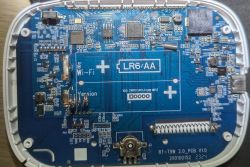
On the other side is the LCD screen and not much else. The main WiFi chip looks to be the 48pin chip to the left. Is it some ESP32 variant? ESP-WROOM-03 perhaps? The board config looks similar to that. I also read the progress you are doing with OpenESP! Great work!
Then there is BAT32G127GH 232101T, which looks to be some kind of LCD controller/MCU. Then there is some unmarked 8pin chip.
Also 48pin LGA chip and 8pin SOIC chips have their labels removed and 123456789 can be seen printed on them.
Any thoughts?
Also there are 2 serial ports, one marked "LOG" and another to the right of it. And some pins (VDD,SWDIO,SWCLK,GND,NRST) right on the bottom of the battery place.
Got this from the serial port called LOG:
Using the other serial port - nothing yet, only some garbage data. I haven't tried reading it as ESP32 yet, I need to understand how to do that , and how to free up the TX/RX pins, and which to short to ground for bootmode of the chip. I have less experience with ESP
, and how to free up the TX/RX pins, and which to short to ground for bootmode of the chip. I have less experience with ESP
My target is to make it locally controllable by flashing OpenBeken on it. I don't yet know what the chip is inside, but it seems to be at the room thermostat part. Also seems to be a TuyaMCU device (I extracted tons of dpIDs from iot.tuya.com portal, also there is a non-WiFi model which could be missing the WiFi chip entirely).
It consists of 2 parts -
* RF receiver part which is powered by mains power. RT-RC9PLUS 1.1_PCB v1.0 200100164
* room thermostat with LCD screen, setting knob and WiFi, powers either by 2x AA 1.5v batteries or USB-C (or both)


RF receivers board in the picture below. There seems to be RF receiving part, relays, status LEDs, contacts COM, OPEN, CLOSE and power input. Pairing switch and some 20pin chip which has no initials on it. Doesn't seem to be any smart device, only RF receiver.

More will follow!
Added after 1 [hours] 2 [minutes]:
The thermostat board looks like this:

On the other side is the LCD screen and not much else. The main WiFi chip looks to be the 48pin chip to the left. Is it some ESP32 variant? ESP-WROOM-03 perhaps? The board config looks similar to that. I also read the progress you are doing with OpenESP! Great work!
Then there is BAT32G127GH 232101T, which looks to be some kind of LCD controller/MCU. Then there is some unmarked 8pin chip.
Also 48pin LGA chip and 8pin SOIC chips have their labels removed and 123456789 can be seen printed on them.
Any thoughts?
Also there are 2 serial ports, one marked "LOG" and another to the right of it. And some pins (VDD,SWDIO,SWCLK,GND,NRST) right on the bottom of the battery place.
Got this from the serial port called LOG:
[MEM DBG] heap init-------size:256000 addr:0x1003a740---------
#interface 0 is initialized
interface 1 is initialized
Initializing WIFI ...
WIFI initialized
init_thread(58), Available heap 0x17f8b18:12:15 INFO tuya_iot_com_api.c:148: rst_reason is 0
OFFSET = 97d
GAIN_DIV = 2ad6
18:12:15 INFO tuya_module_demo.c:1227: thermostat_radiator:1.0.6
18:12:15 INFO tuya_module_demo.c:1228: firmware compiled at Jun 17 2023 12:06:23
18:12:15 INFO simple_flash.c:670: init succ
18:12:15 INFO mf_test.c:139: have actived over 15 min, not enter mf_init
18:12:15 INFO tuya_main.c:142: mf_init succ
18:12:15 INFO tuya_main.c:143: firmware compiled at Jun 17 2023 12:06:23
18:12:15 INFO tuya_module_demo.c:1056: product_info = {"p":"eaacu1av8nz9qdva","v":"2.0.11","c":0,"t":0}y
18:12:15 INFO tuya_module_demo.c:1307: pid = eaacu1av8nz9qdva, ver = 2.0.11, wifi_set_mode = 0
18:12:15 INFO tuya_iot_com_api.c:954: country_code =
18:12:15 INFO tuya_iot_com_api.c:958: MAC[1c-90-ff-16-2f-63]
wifi_set_lps_smartps:2
[tuya_module_demo.c:1157] sleep_time_ms = 1000
[tuya_module_demo.c:1169] wifi is not set for powersave, don't do everything
[tuya_module_demo.c:1157] sleep_time_ms = 30000
18:12:15 INFO tuya_iot.c:577: tuya_iot_init
18:12:15 INFO tuya_endpoint.c:234: endpoint_mgr.region:EU
18:12:15 INFO tuya_endpoint.c:235: endpoint_mgr.regist_key:36F7
18:12:15 INFO tuya_endpoint.c:210: Host region:EU
02:00:00 INFO lpmgr.c:148: min_dtim = 0
02:00:00 INFO netmgr_api.c:433: netmgr_start
Using the other serial port - nothing yet, only some garbage data. I haven't tried reading it as ESP32 yet, I need to understand how to do that



